Affiliate links on Android Authority may earn us a commission. Learn more.
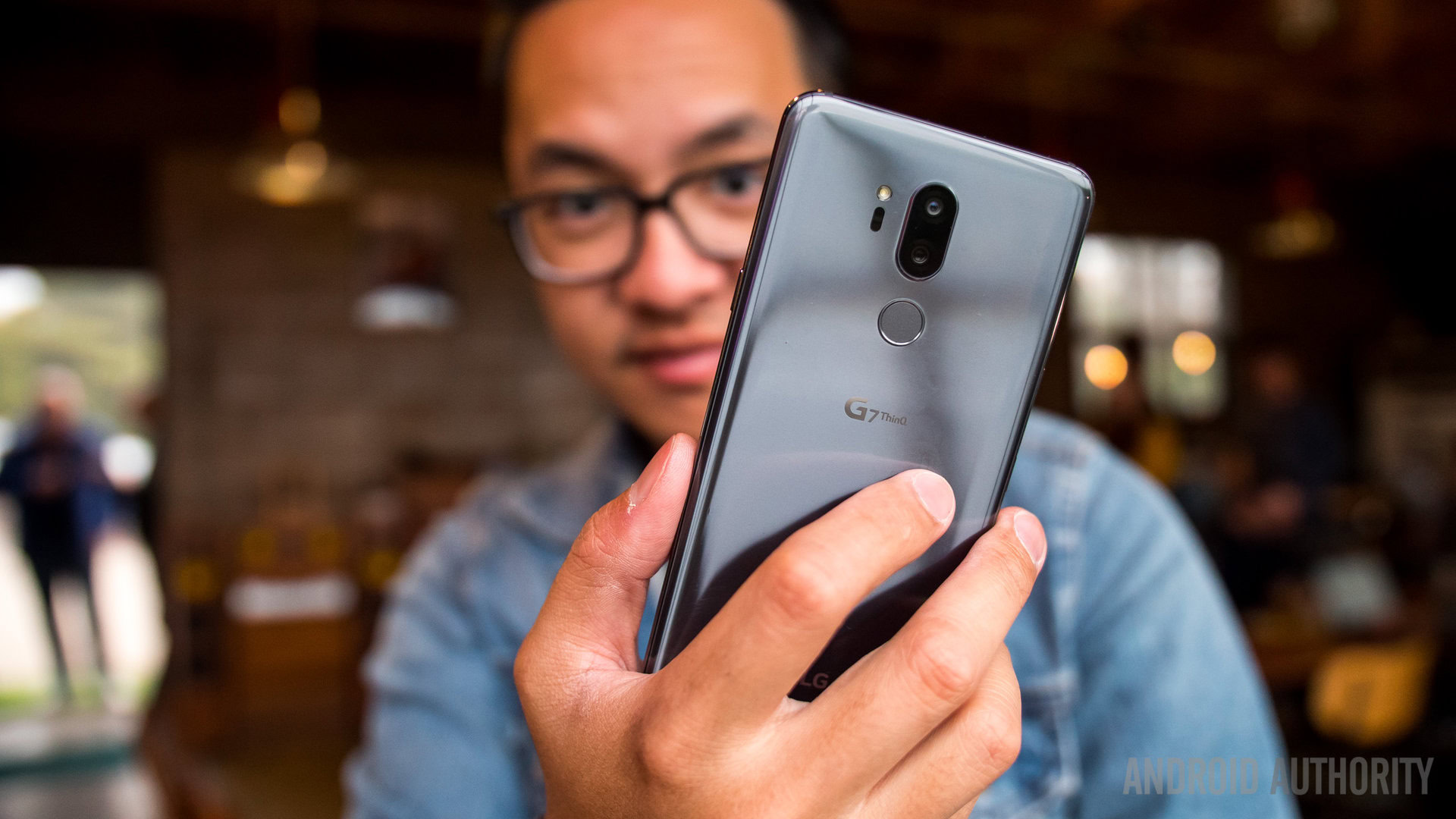
LG G7 ThinQ
What we like
What we don't like
Our scores
LG G7 ThinQ
The latest in the G series tries to bring the relationship between LG and Google even closer, while once again upgrading its main feature, the camera experience. The LG G7 ThinQ brings an AI-enabled camera, a Google Assistant button, and more, but is that enough to bring LG back to the forefront of the flagship game? Let’s find out in our LG G7 hands-on.
Read Next: LG G7 ThinQ full review
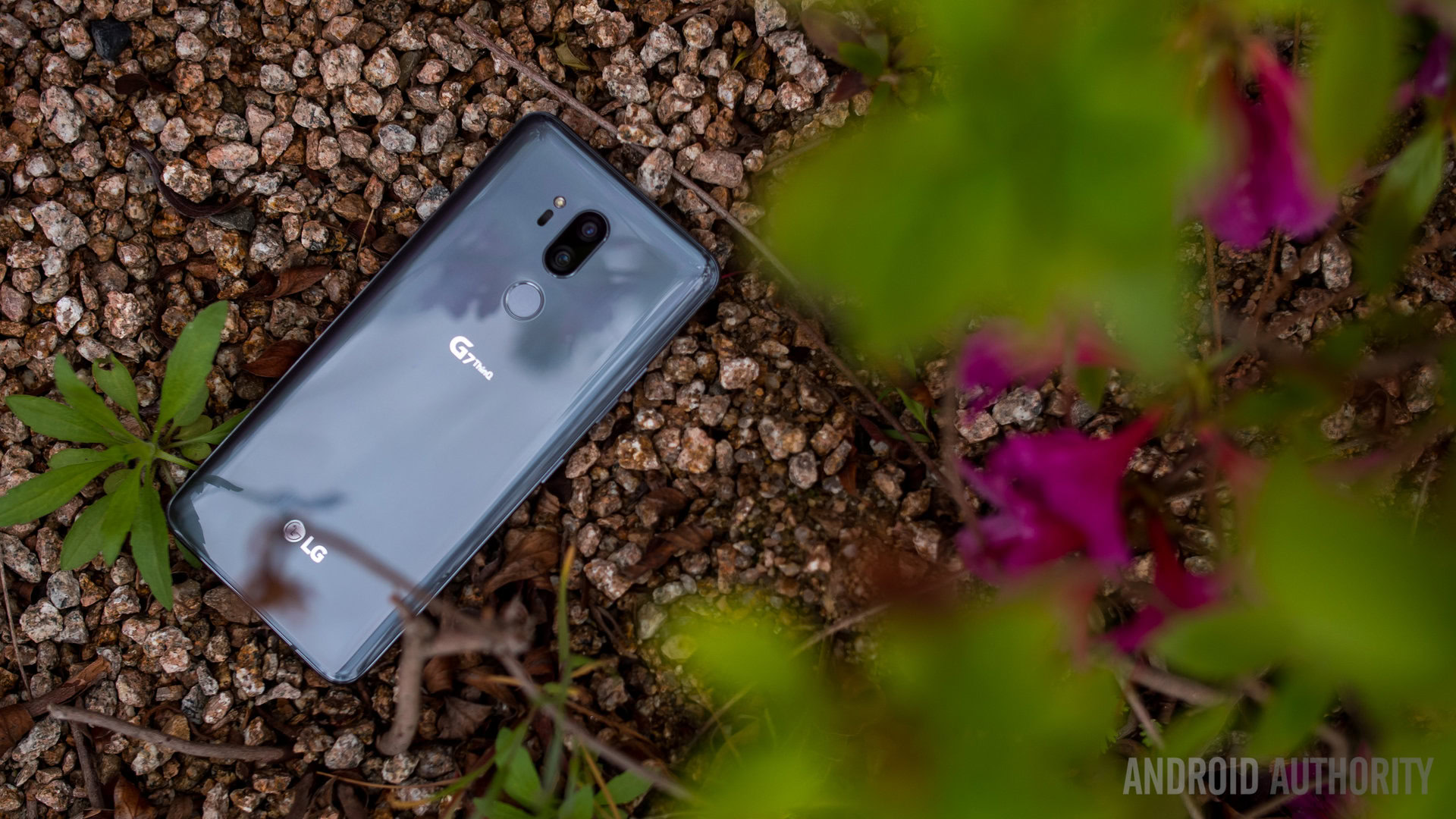
First things first — the ThinQ name on the end of the official title for this phone is a connection to LG’s IoT platform. However, we were told during our time with the phone in Korea we can just call it simply the LG G7.
The LG G7 looks a lot like a mix between the V30 and the G6.
Though LG has moved to a slower release cycle for its mobile devices, the influence of the past is still very strong in this handset. The design of the device is much like the LG V30, which had the shape of the LG G6. The design’s tall screen now sports a notch, with a glossy back that comes in four different colors. It might not be the most unique-looking device, but it is still a looker. What is interesting in the G7 is how LG is ever so slightly moving away from certain aspects that helped differentiate their devices from the rest of the field.
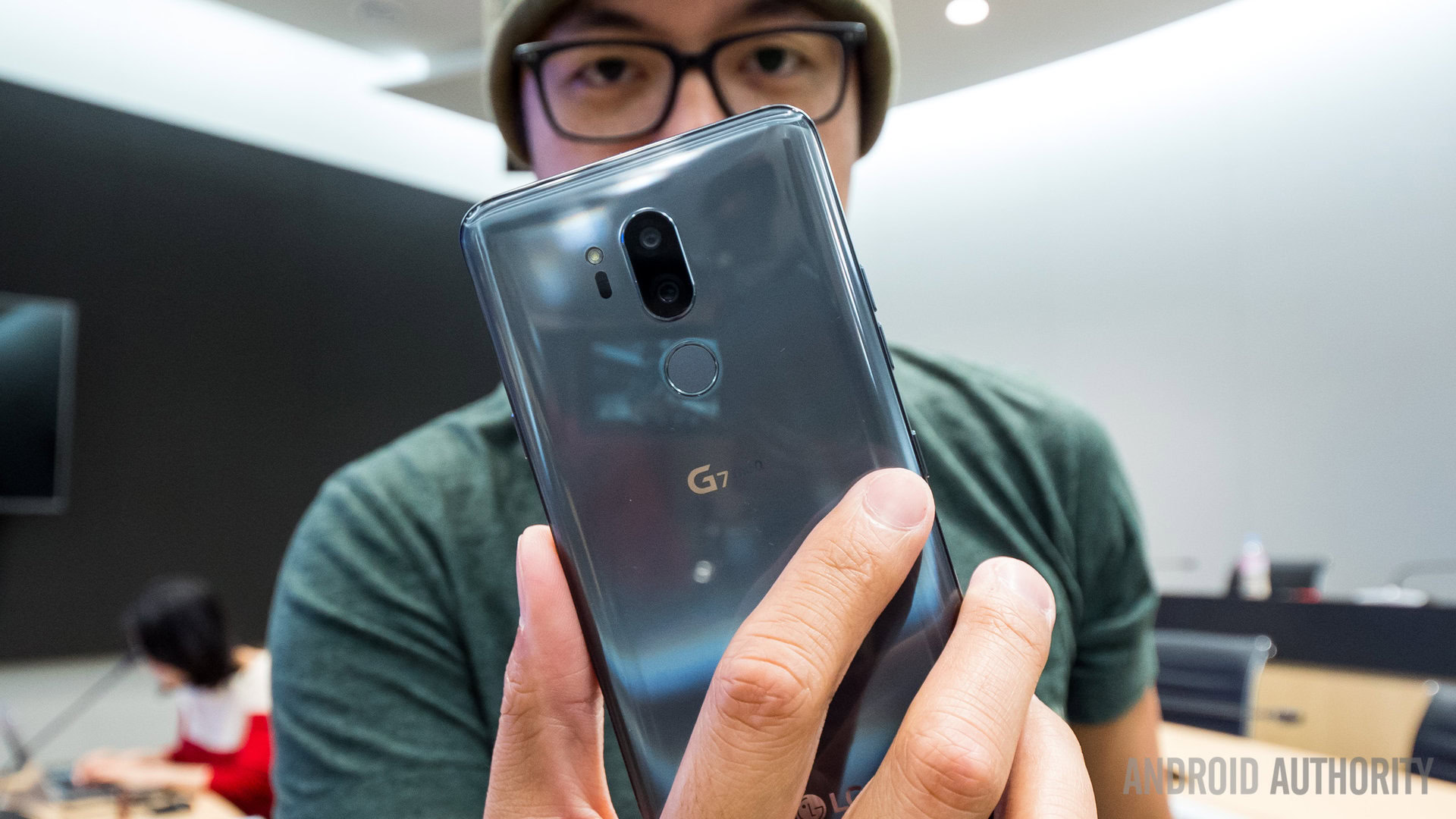
A big example of this is the fingerprint reader, which is still in the same place as before, but no longer doubles as the power button. Instead, the power button is located more conventionally on the side, which might feel a little odd to LG veterans. Apparently, this was changed to make waking the device easier. Some users found the back power button a little annoying to reach, especially in situations like driving (or when your phone is lying face up on a table). The power button on the side also affords the phone a new way of quickly launching the camera with just a double tap.
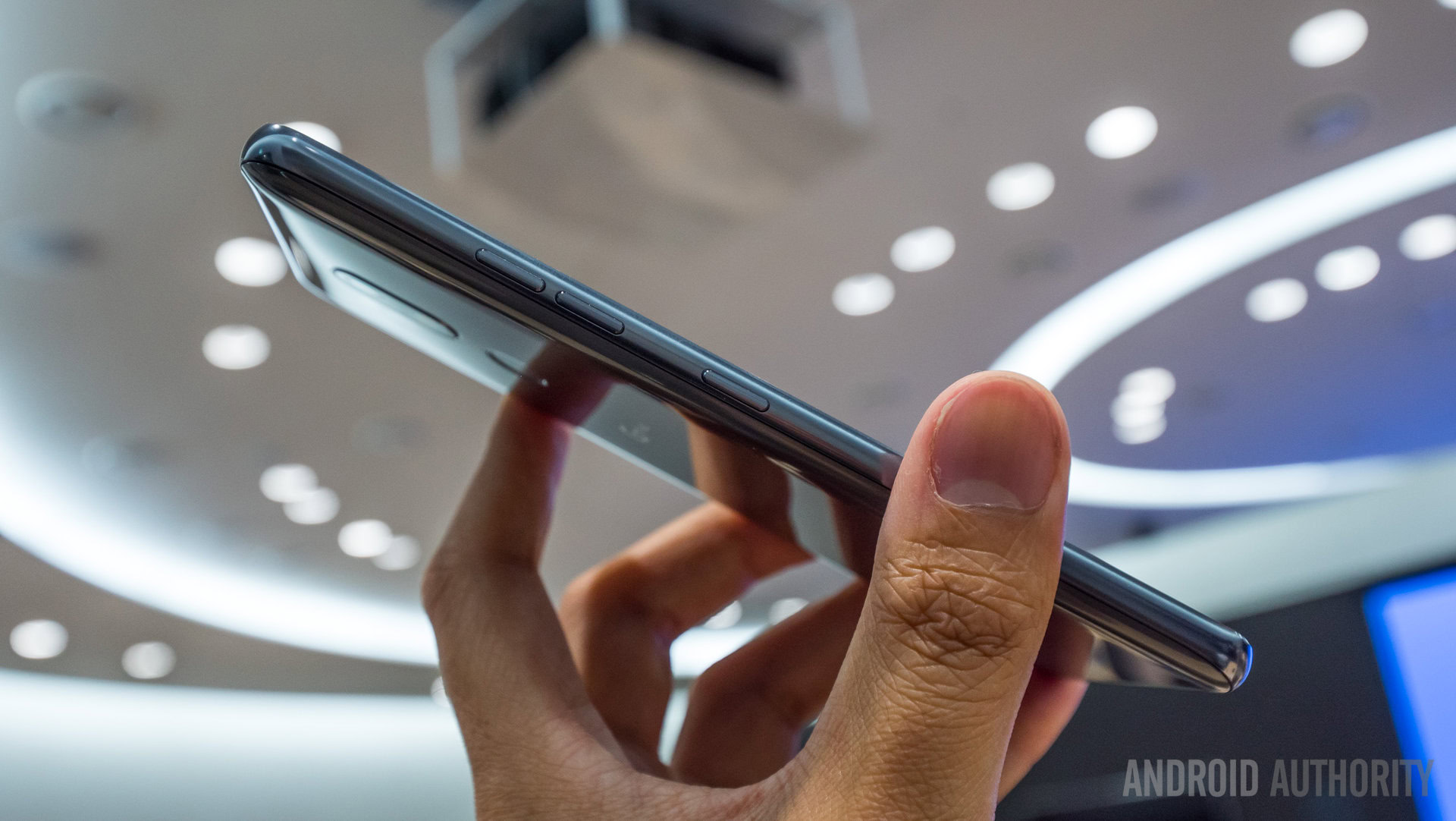
A new AI button is now found on the other side of the phone. LG has partnered up with Google very closely again to provide G7-specific functionality. Google Assistant is the G7’s AI assistant of choice, and this button allows for full control over its triggering. Press the button and it will launch Google Assistant in the same way that holding the home button does. Double press the button and it will launch Google Lens. Press and hold the button and Google Assistant will listen for as long as the button is pressed down for the voice search string, making the start and end of your query easier to identify.
The AI key is a unique and potentially invaluable way of interacting with Google Assistant
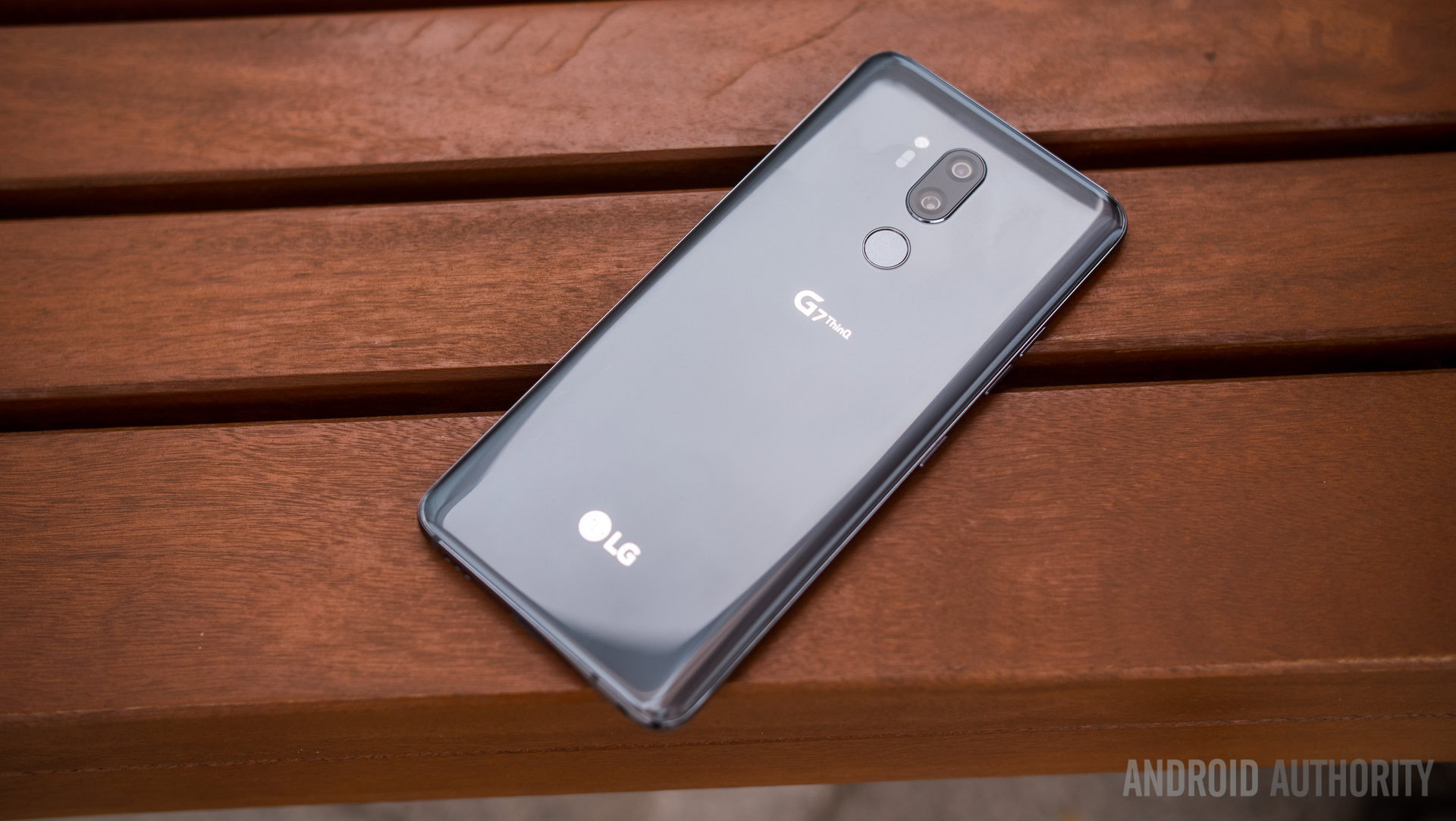
That last function might seem simple — like talking to Google through a walkie-talkie — but it might be the most significant change to the way Assistant works. Only Google Pixel Buds support that kind of long-press interaction, where the touch-sensitive earbuds can be held down to take a search string for the duration of the hold. Think of all the times you failed to get a proper search done with Google Assistant because it failed to recognize when you’d stopped speaking. For that reason alone, this implementation will make Google Assistant a bit easier to manage and use. It is certainly a different take on what we have seen in the form of squeezing on other devices.
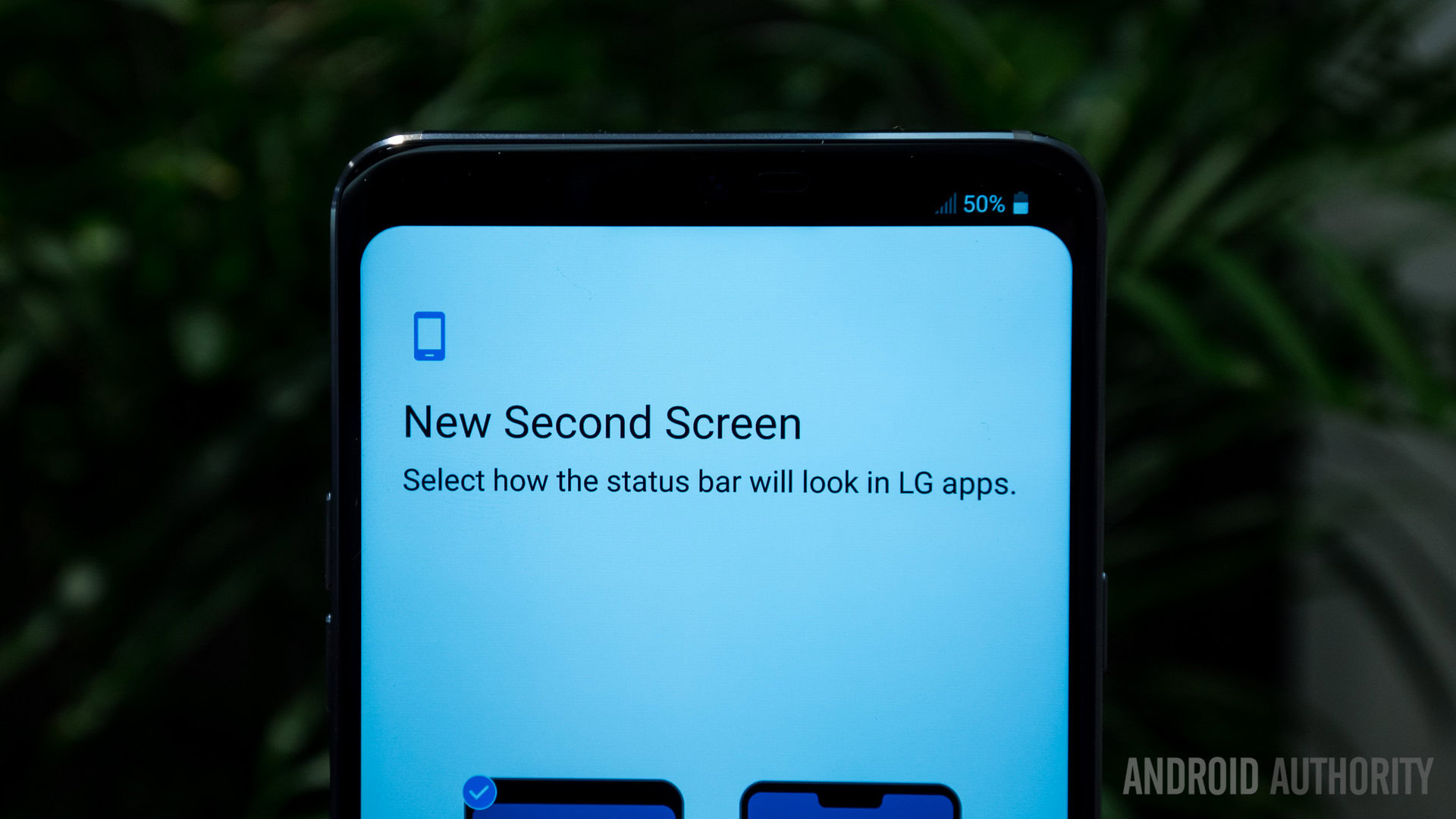
The notch is becoming a very common addition in new phones this year, and every manufacturer is trying to bring their own spin on it, LG included. First off, the phone speaker and the better front-facing camera are centered at the top, where the notch just covers up that portion of the screen.
LG tries to make the notch easier on the eyes through customization. It can be “turned off” by making the entire notification area black. Those same areas can also be made different colors and gradients. Admittedly we are a little miffed that what is called the “New Second Screen” doesn’t really add any new functionality, like the old second screens of the LG V10 and V20 once did.
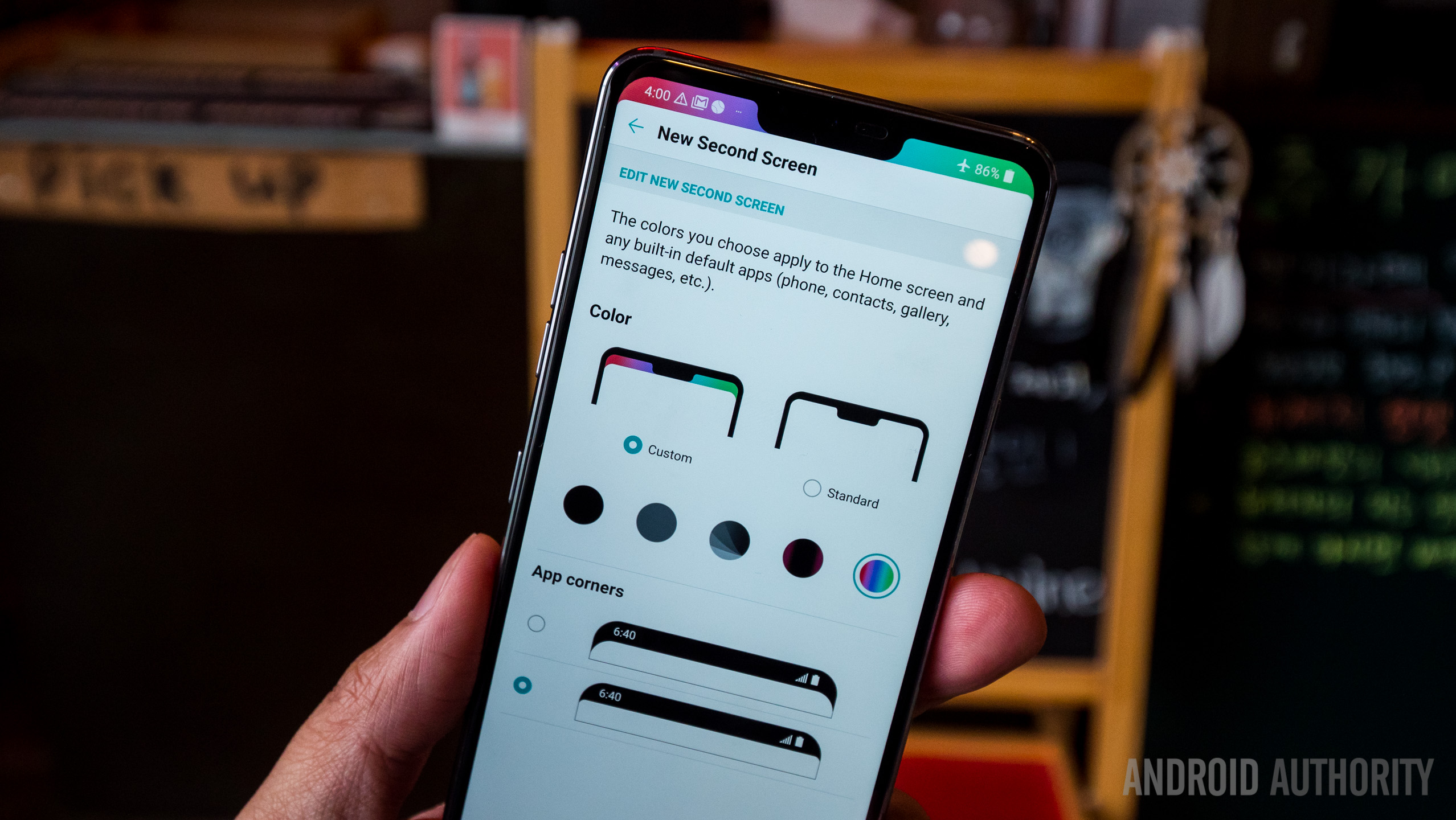
The screen is still a powerful Quad HD+ IPS LCD panel. An OLED screen might have appealed to more people, but LG chose to stick with LCD for one particular reason: brightness. When set to Super Bright Display mode, the screen can get to 1000 nits if the user so chooses and can stay that bright for a maximum of three minutes.
The screen has also been tuned to retain the fidelity of colors and sharpness of text. This is more than just changing the screen settings in broad daylight situations. When directly underneath the sun, the screen will brighten automatically, but prioritize textual elements in places like the phone or messaging apps. It is only when the user triggers the Boosted Mode that the screen will be a very bright, but still effective, display experience.
Everything looks crisp and proportionate on this display. LG’s software has been accused in the past of feeling bloated, without a fully coherent design language. Yearly updates have been good to this now Oreo-enabled version of its interface.
There isn’t much wasted space in the new menus. The home screens can be changed to include not only an app drawer button, but also a swiping motion similar to the Pixel Launcher or Samsung UI, and LG’s own companion home screen experience seems simple enough.
LG’s ploy for AI capabilities shows in not only the included SmartThinQ application, but also its Smart Bulletin, which tries to give users contextual information based on location and time. The page will display all of that in cards. It isn’t too hard on the eyes yet, though we will need to spend more time with it to see if LG’s algorithms are up to par with the likes of Google Feed and Bixby.
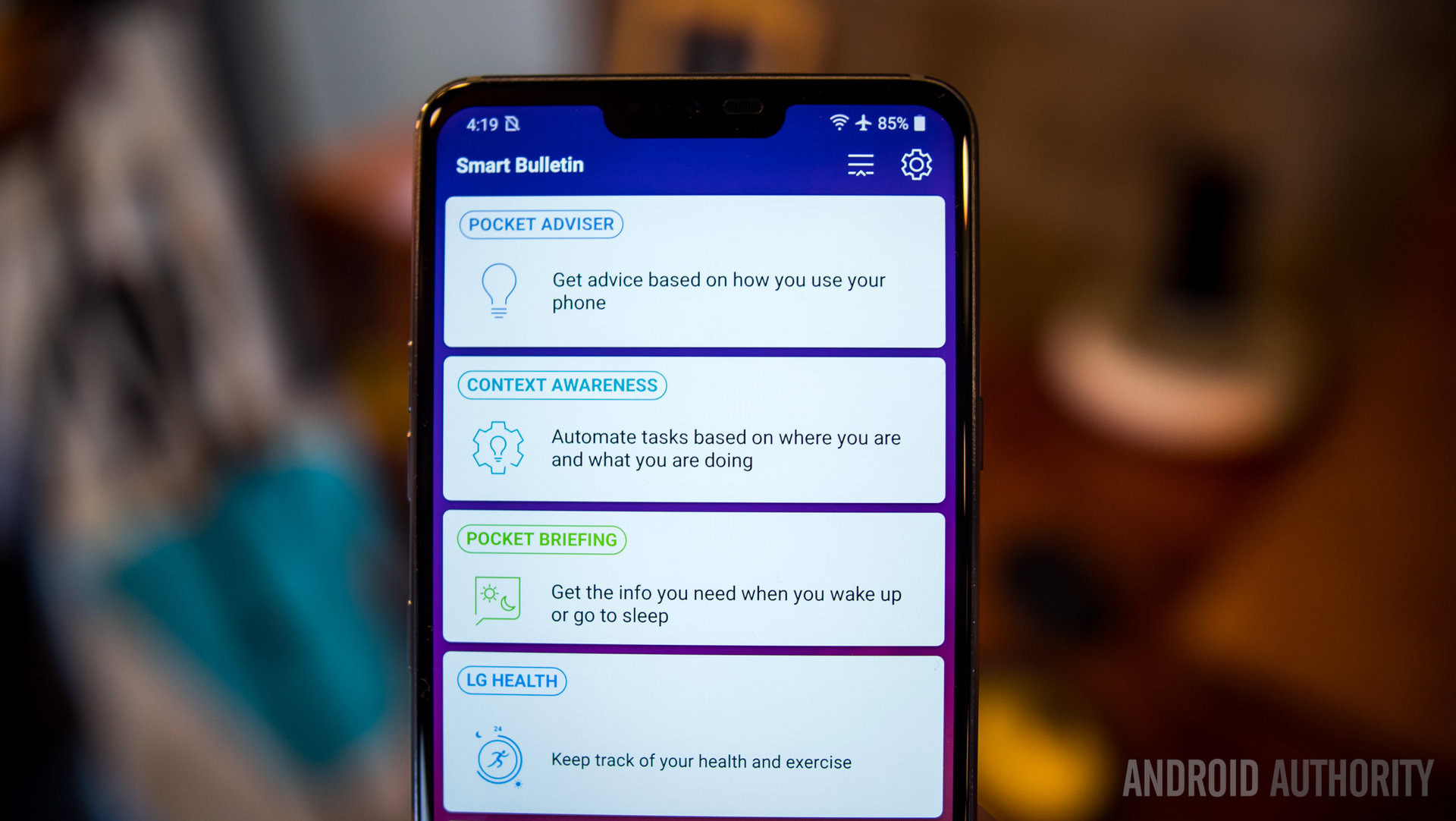
The specs you’d expect from a 2018 high-end device power this phone. It’s got a Snapdragon 845 with either 4GB of RAM and 64GB of onboard storage, or 6GB of RAM and 128GB of storage. The larger version will be available later, though we are not sure which markets will get it (we were told the U.S. will only get the 4GB/64GB version). A 3,000mAh battery might not sound huge, but we will reserve judgment until our real-world usage and tests. All the other bits and pieces you would want in the phone are here, including the headphone jack.
LG continues to be one of the few companies that pays this much attention to the audio experience.
A single bottom-firing speaker might sound like a pretty conventional setup, but LG has taken it a step further by creating Boombox Sound. This is a unique take on the speaker experience, as it makes the entire back portion of the phone into a sound chamber.
Don’t miss: LG G7 ThinQ specs: Fantastic audio and a super bright screen
In simple terms, the space between the back cover and everything it protects is now a place for sound to literally emanate from. When playing audio at loud volumes, the entire back of the phone will vibrate — just enough so you can feel it, but not so much that it becomes annoying. This vibration makes the sound resonate through anything the phone might lay on. Any box or hollow container will thus create great sound.
The vibrations make materials like thin wood and cardboard boxes literally amplify the sound, making for a richer experience far better than any other device — even if you do that trick of putting phones in glass cups. There’s a striking difference between the LG G7 and any other phone we’ve tested; practical or not, this is an interesting way of thinking — or listening — outside the box by LG.
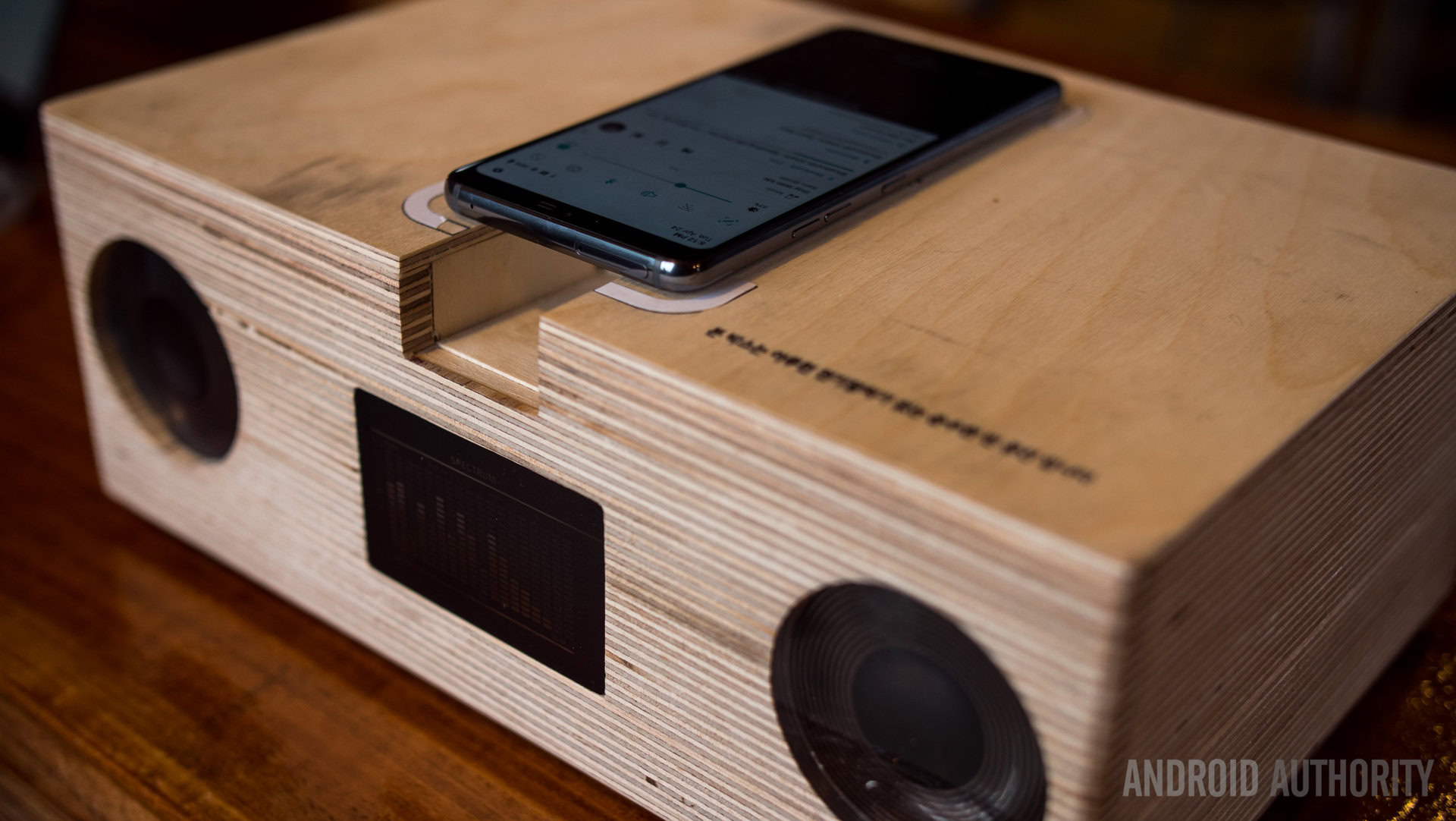
The headphone jack returns, bringing with it the Quad DAC once again, this time with tuning made for the DTS-X 3D standard. That standard is basically an add-on for changing the soundstage of whatever you are listening to and can either narrow or widen the audio experience.
Read more: What is DTS:X virtual surround sound in the LG G7 ThinQ?
The Quad DAC is still one of the big trump cards for LG’s phones. Anyone disillusioned by the USB Type-C adapters of the world can rest assured everything out of this phone sounds really great, no matter what headphones you use. Also, the Quad DAC plus active noise cancelling is one hell of a combination.
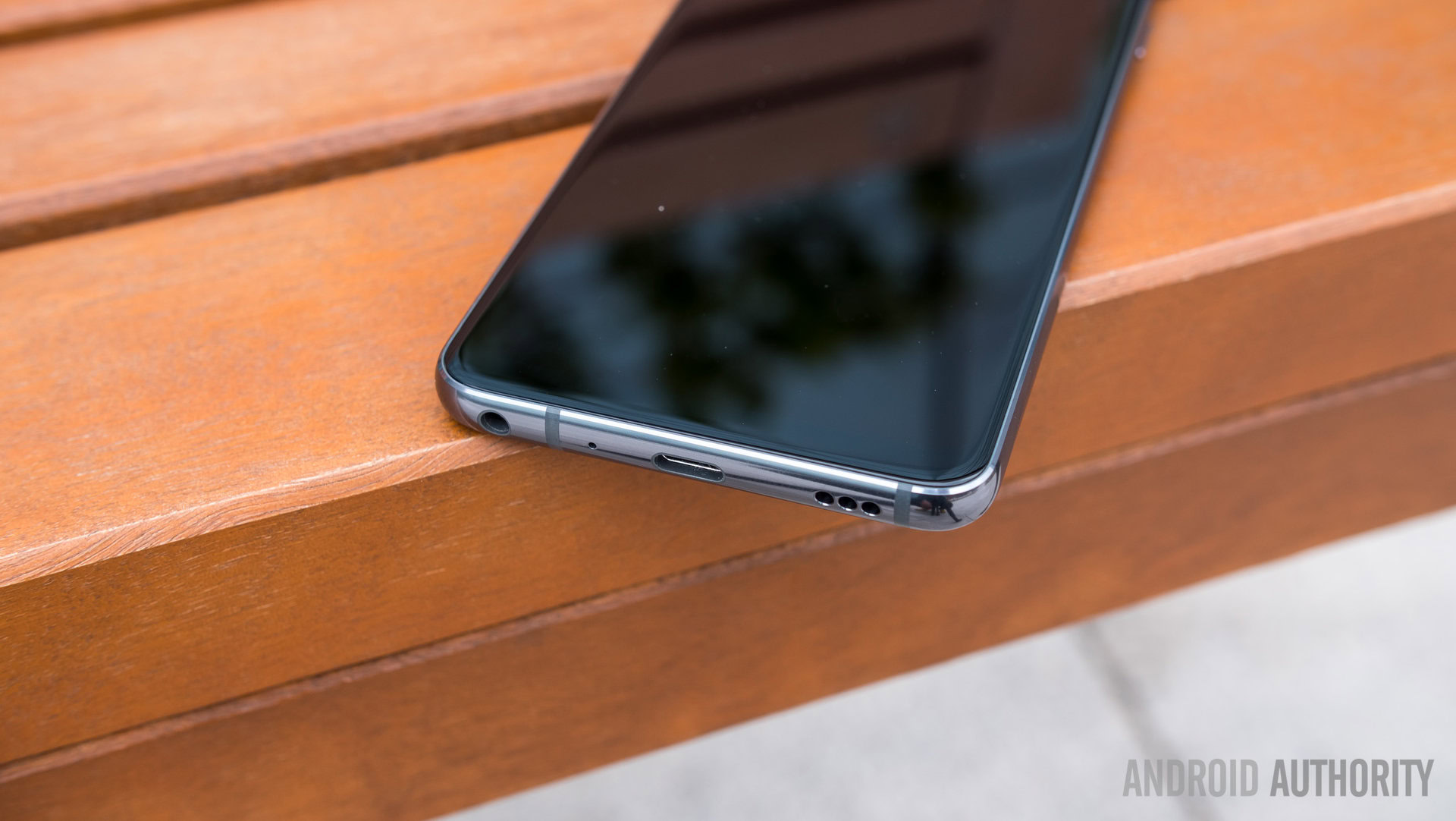
The camera has been LG’s most unique and most polarizing phone feature the last few years. Let’s start off with some great news: the front-facing camera is finally good — and not just because of the bump up to 8MP from 5MP. Just from a cursory glance, the sharpness has been greatly improved and details are no longer smudged by shoddy processing and over-softening of features.
The front-facing camera also now has a portrait mode, which is software based but still welcome for the artistic bokeh background effects it brings. The improvements to the front-facing camera alone make the G7 a viable upgrade for anyone unhappy with selfies on their previous LG phones.
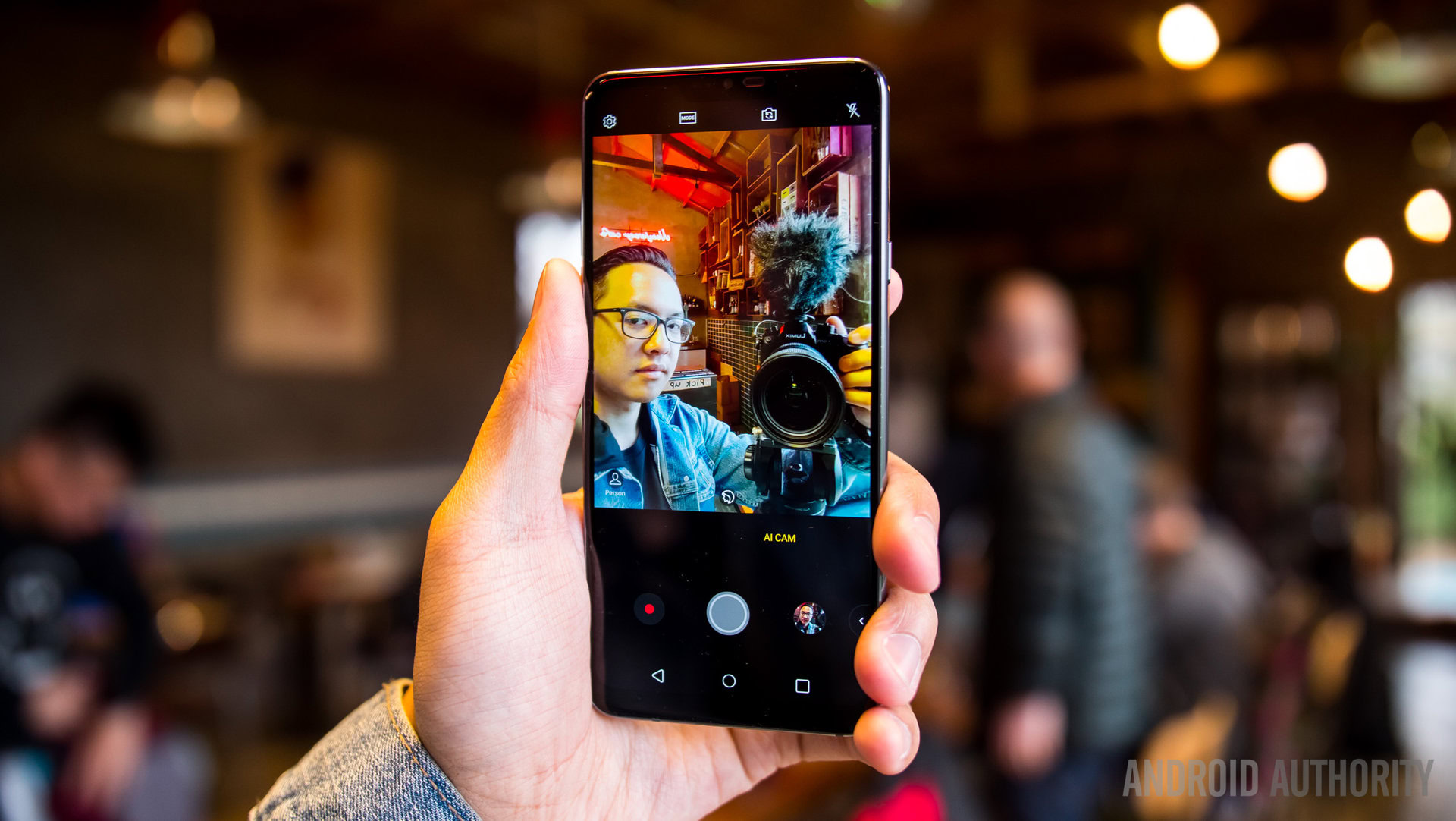
Finally — an LG flagship with a good front facing camera!
Portrait mode tends to take advantage of a dual lens setup, most commonly through a regular and telephoto lens. LG did not want to mess with a good thing, however, and kept the wide angle lens. It now has a 107-degree field-of-view, which helps correct the distortion on the sides of the frame without sacrificing too much of the wide angle. That wide angle lens is still one of the best parts of this phone — the style and drama it affords still makes for one of the most unique photo-taking experiences around.
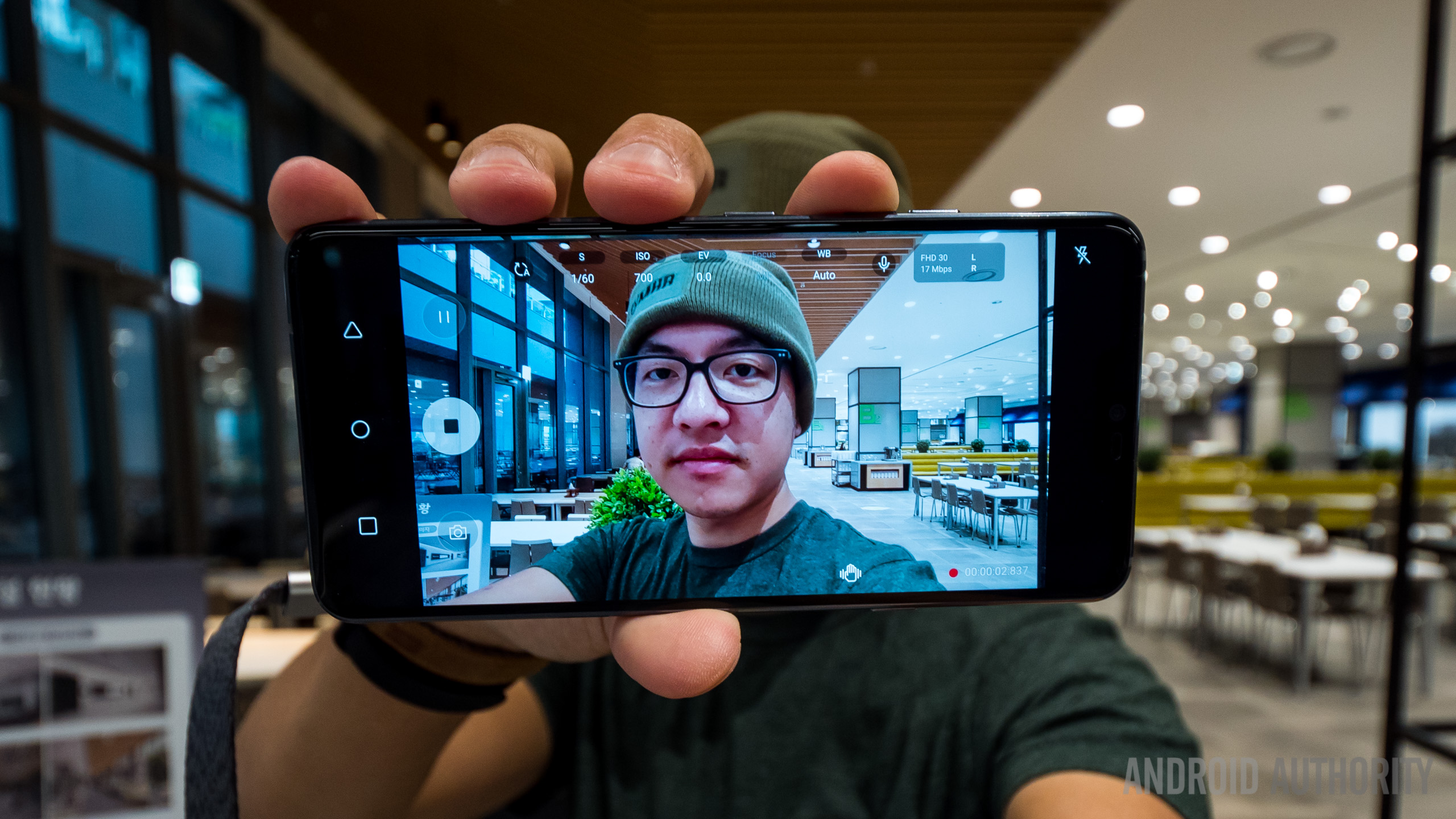
Because the rear camera lacks a telephoto lens with tighter zoom capabilities, LG’s portrait mode keeps the field-of-view the same as the main lens to remain effective. This means users don’t have to step back because the camera is trying to reach farther into the frame. Some might prefer the look of the tighter frame, but others may like not having to move in order to make the portrait work. Though our devices were very pre-production, the portrait mode shots needed a little bit more work. It messed up the cutouts around elements like hair or my glasses in certain shots.
LG decided on a pixel binning solution for low light photography. Essentially the 16MP of either rear camera shifts into larger pixel groups of four so each group can more effectively flood in light in a darker scene (the same thing HUAWEI has done with the P20 and HTCdid with UltraPixels). The result is a 4MP image that hopefully exposes better than the alternative. We didn’t get to test this much but we’re looking forward to trying it further when we get our review unit.
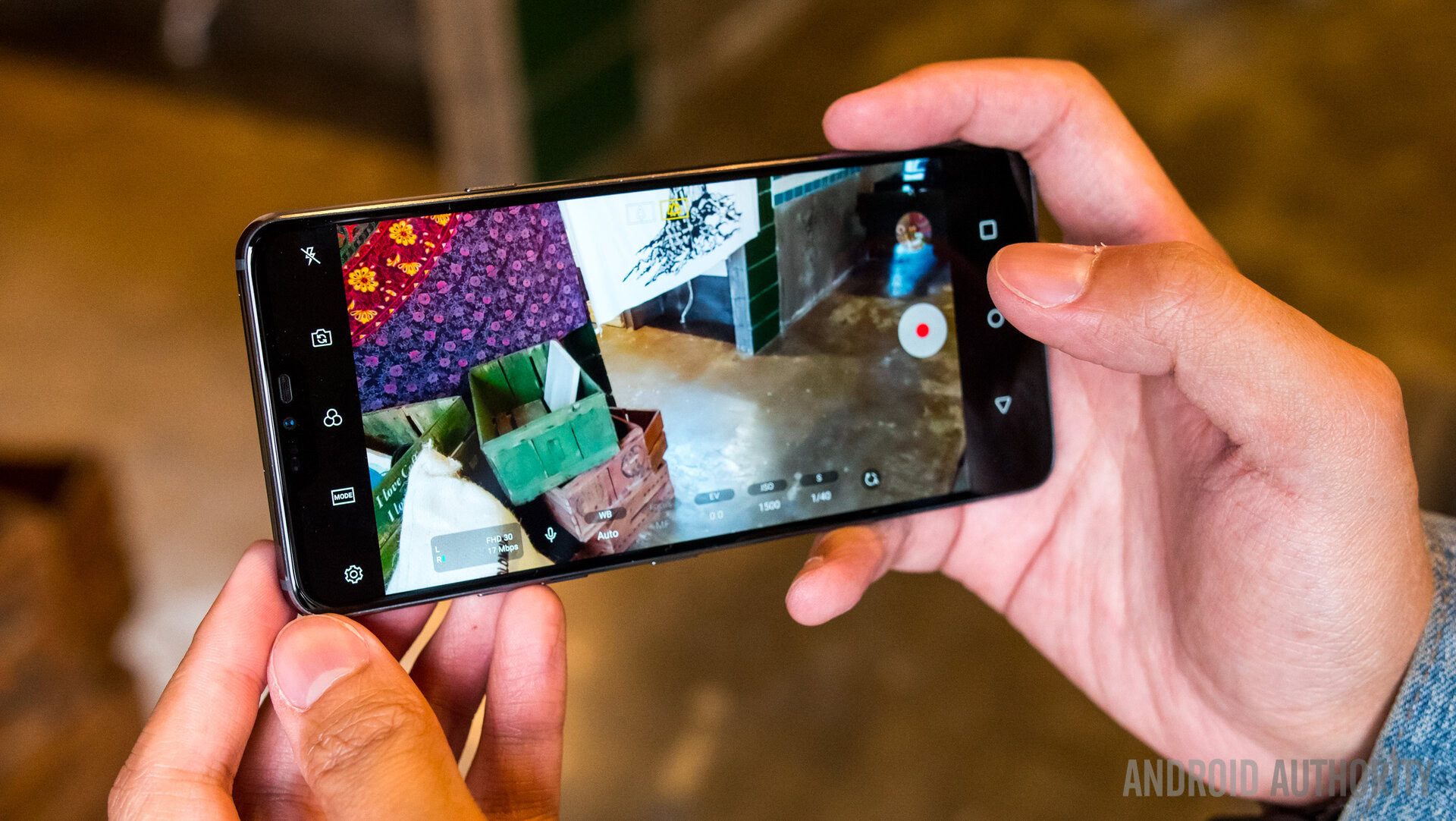
Video is still a big deal with the LG G7. It retains the manual movie mode and the high-quality audio capture capabilities of the LG V30. The wide-angle lens is still very viable, too, though I noticed I could not change between the two lenses while recording.
The camera AI is mostly consistent at identifying the subject, but the tag cloud might make some users think otherwise.
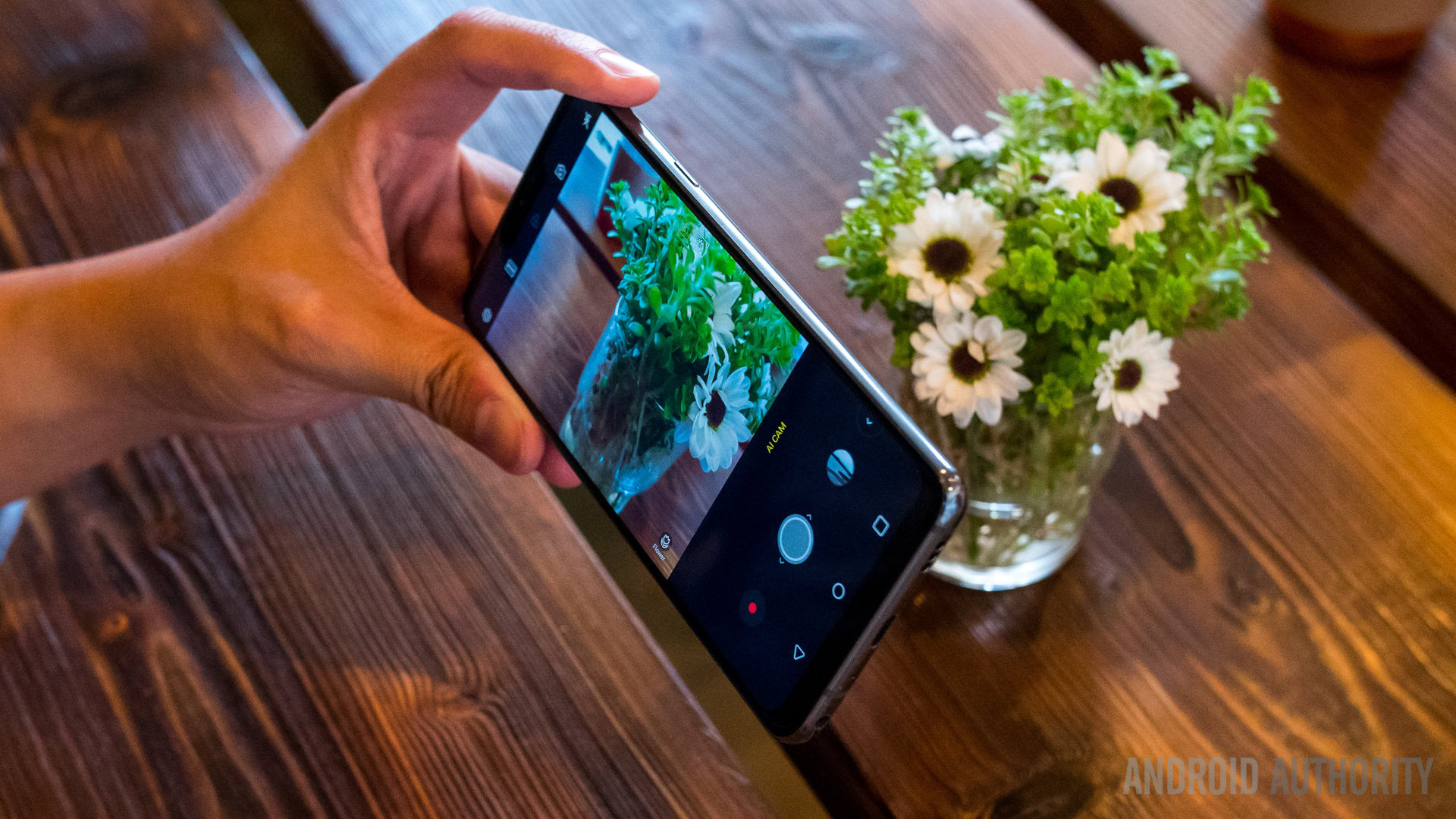
LG already introduced AI in its updated LG V30S ThinQ. The tag cloud from that release has made its way to the G7. This cloud is a flurry of words that shows the camera is trying to recognize what object or subject it is pointed at when AI is on. Once it decides what is in the frame, settings change to enhance the photo. Take a second on a plate of Korean BBQ and the camera will change to the food settings, which mainly bumps up the saturation. Take a picture of a tree and the AI mode will make the green colors pop.
AI modes in cameras are a little bit new and their effectiveness is down to the optimization of the software. I found some odd words in the cloud during a selfie session, but it never ended up deciding I was a cauliflower. The camera seems to find its subject well enough by the end of its search. Thousands of objects have been inserted into the AI memory of the camera and it is always searching. We will see how the AI Cam fares when we test it further in our final production review unit.
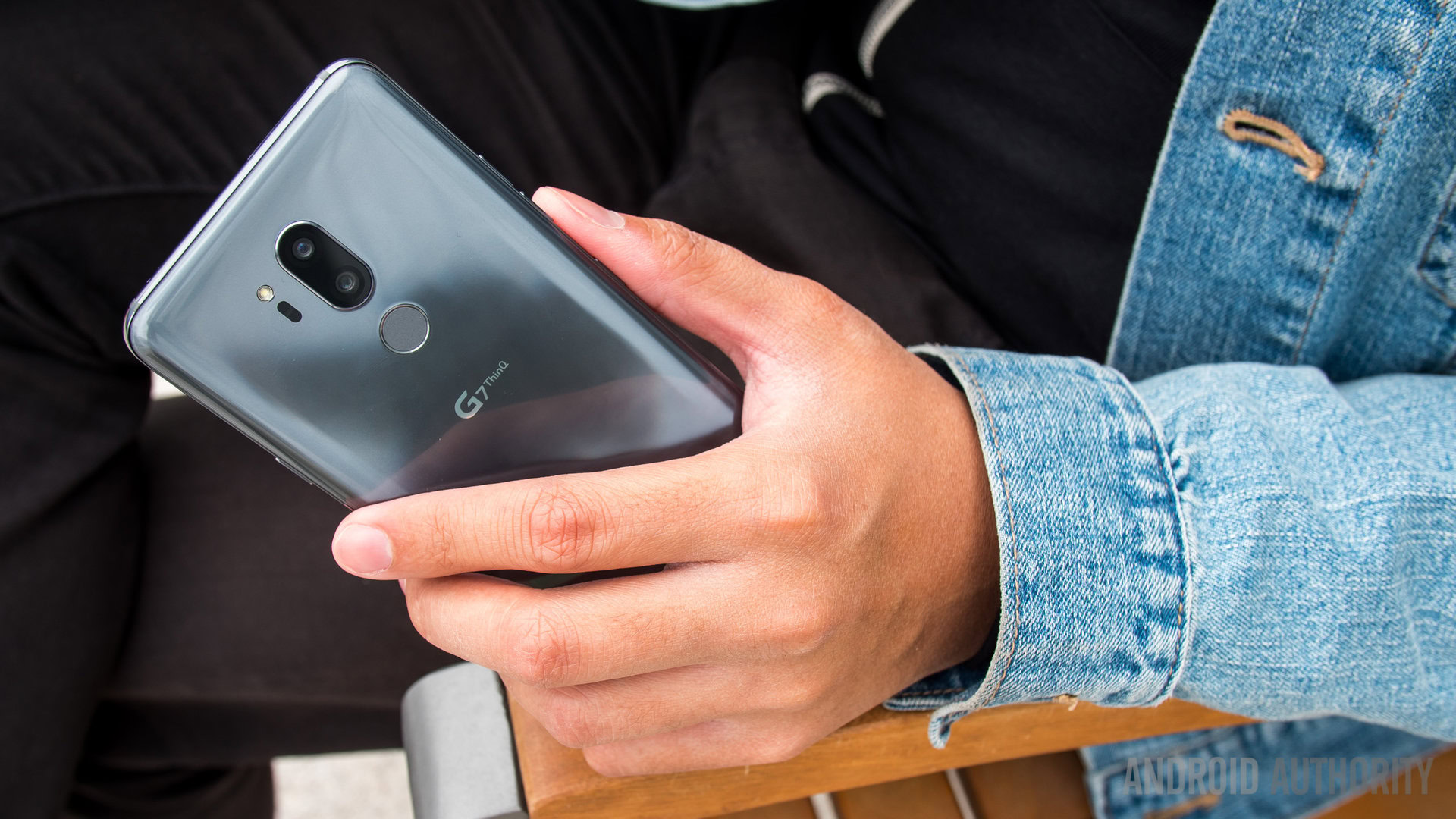
There you have it: the LG G7 ThinQ. LG proves each year it really prioritizes key aspects others might take for granted (like a high-quality headphone jack, for instance). While some of its decisions this year seem more trend-following (like the notch), the features where LG tries to be different are what people will really appreciate. The wide-angle camera is great but we will have to wait and see if Boombox Sound ends up on the list, as well.
We are excited to get our hands on an LG G7 review unit to see how the handset fares under more rigorous testing. Until then, let us know how you feel about the LG G7 below!